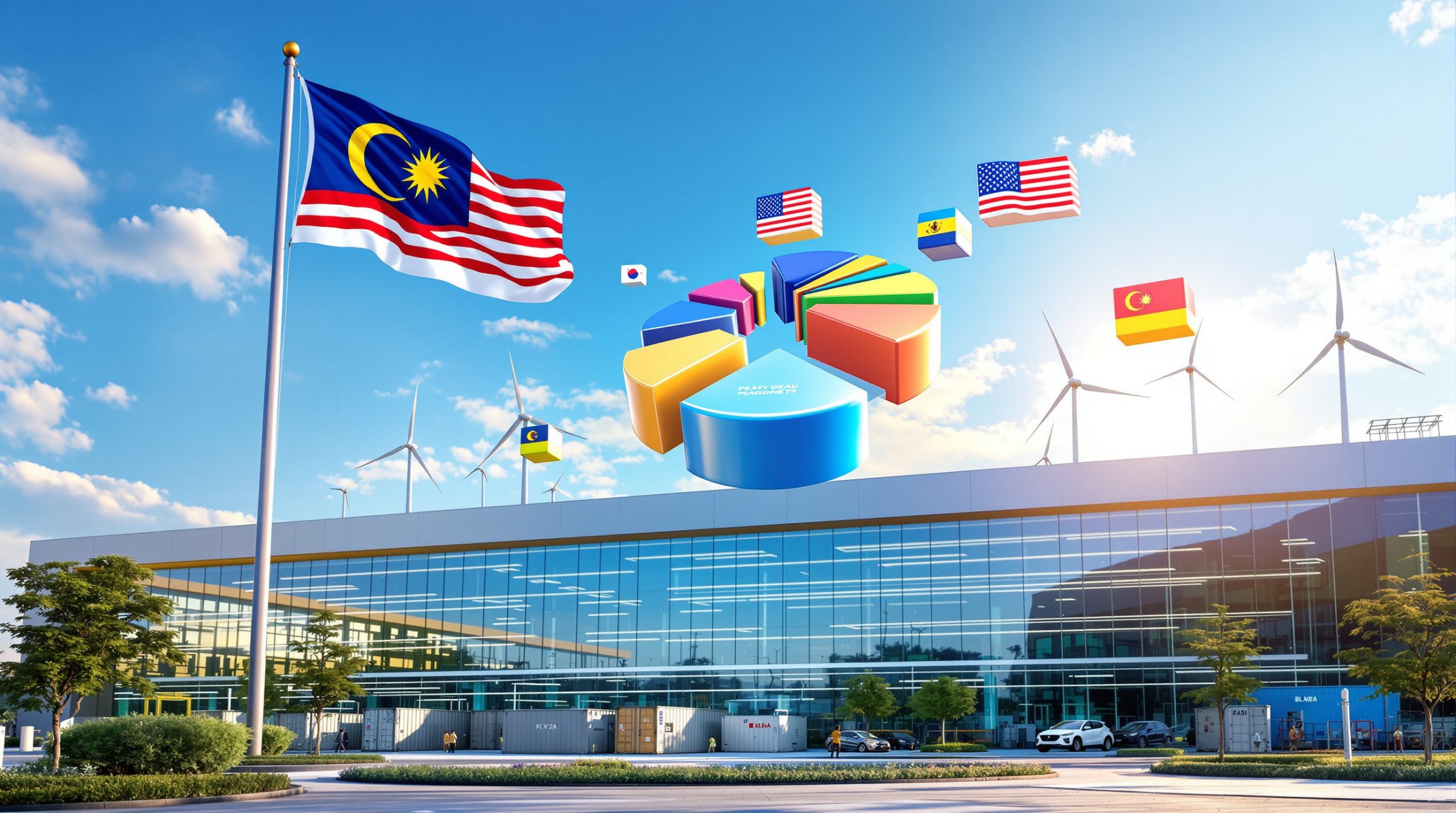Rio Tinto's Role in Advancing Green Steelmaking Technology
The mining giant Rio Tinto has embarked on a groundbreaking journey towards greener steel production, joining forces with industry leaders to develop a revolutionary hydrogen-based steelmaking facility. This initiative represents a significant leap forward in the quest to decarbonise steel industry, positioning Rio Tinto at the forefront of sustainable mining and metals processing.
What is the HYFOR-Smelter Project?
The New Hydrogen-Based Steelmaking Plant
The HYFOR-Smelter Project is being established at voestalpine's site in Linz, Austria, marking a watershed moment in steelmaking innovation. With a projected capacity of three tonnes of hot metal per hour, this demonstration-scale facility will showcase a completely reimagined ironmaking process designed to achieve net-zero carbon dioxide emissions—a significant departure from conventional carbon-intensive methods.
At the heart of the facility lies an integrated system combining hydrogen-based fine-ore reduction (HYFOR) with advanced smelting technology from Primetals Technologies. This combination enables the plant to operate with minimal environmental impact while maintaining productivity and quality standards expected in modern steel production.
Construction of the plant is already underway, with operations expected to commence in mid-2027. The timeline reflects the complex engineering challenges involved in scaling up such innovative technology from laboratory and pilot testing to industrial implementation.
Industry analysts have highlighted that the Linz location provides strategic advantages, including access to existing infrastructure, proximity to renewable energy sources, and integration with voestalpine's established operations. This positioning enables more efficient technology transfer and real-world validation of the process.
The Technology Innovation
HYFOR stands as the world's first direct reduction technology specifically designed for iron ore fines—a significant departure from conventional methods that require pelletized or sintered ore. This innovation eliminates energy-intensive agglomeration steps like pelletizing, which traditionally consume substantial energy and resources in the ironmaking process.
The technology employs a fluidized bed reactor system where hydrogen gas passes through fine iron ore particles, removing oxygen without carbon involvement. This process yields a highly metallized iron product ready for the subsequent smelting stage.
The smelter component utilizes renewable electricity rather than fossil fuels, providing the thermal energy needed for melting and completing the final reduction process. This electrification pathway ensures the entire production chain can operate with minimal carbon emissions when powered by renewable sources.
One particularly noteworthy aspect of the technology is its adaptability to varying ore qualities, which extends the range of usable iron ore resources beyond those suitable for traditional blast furnace routes. This flexibility could potentially reshape resource utilization patterns in the mining industry, allowing previously marginal deposits to become economically viable.
Technical validation of the process has already occurred at a smaller scale, with the pilot plant in Donawitz, Austria demonstrating successful operation since 2021. Multiple test campaigns have confirmed the technology's effectiveness in producing high-quality metallized iron, providing confidence for the larger-scale implementation in Linz.
How is Rio Tinto Contributing to the Project?
Rio Tinto's Technical Expertise
Rio Tinto brings unparalleled expertise in iron ore quality and preparation to the consortium. As one of the world's largest iron ore producers, the company possesses extensive knowledge about ore composition, behavior, and processing requirements that prove invaluable for optimizing the HYFOR technology.
This technical input extends beyond simple material supply to encompass mineral processing know-how, helping Primetals Technologies refine and commercialize the hydrogen-based reduction process. Rio Tinto's metallurgists and engineers are actively collaborating with technology developers to ensure the system performs optimally with various ore types and qualities.
The company's contributions are particularly significant in advancing fluidized bed technology development. Fluidized beds require precise control of particle size distribution, gas flow dynamics, and reaction kinetics—areas where Rio Tinto's research capabilities provide substantial advantages through decades of accumulated knowledge in mineral processing.
According to industry experts, Rio Tinto's involvement accelerates the technology's commercialization timeline by approximately two years, bringing forward potential carbon reduction benefits and competitive advantages for early adopters in the steel industry.
Source of Iron Ore Supply
The new plant will source 70% of its iron ore from Rio Tinto's extensive Pilbara operations in Western Australia. These operations, spanning more than 16 mines across the region, produce some of the industry's highest-quality iron ore, with relatively low impurity levels that facilitate efficient reduction in the HYFOR process.
Additional ore supplies will come from the Iron Ore Company of Canada, in which Rio Tinto holds a majority stake. This diversification ensures supply chain resilience while providing opportunities to test the technology with different ore compositions and characteristics.
Looking ahead, Rio Tinto plans to integrate iron ore from its developing Simandou operations in Guinea once production commences. The Simandou deposit is renowned for its exceptionally high-grade ore (65% Fe content), which could further enhance the HYFOR process efficiency and reduce energy requirements.
This multi-source supply strategy demonstrates Rio Tinto's commitment to leveraging its global portfolio to support green transformation in mining, while also ensuring the demonstration plant has access to consistent, high-quality feedstock throughout its operational life.
Who Are the Key Partners in the Consortium?
The Collaborative Approach
The HYFOR-Smelter Project exemplifies collaborative innovation, bringing together diverse expertise from across the steel value chain. Austrian steelmaker voestalpine provides the physical site in Linz and contributes operational expertise from its decades of steelmaking experience, ensuring the new technology integrates effectively with existing production processes.
Primetals Technologies serves as the technology provider, having developed both the HYFOR process and the complementary smelter technology. Their engineering prowess and experience in designing and constructing metallurgical plants worldwide have been instrumental in bringing the concept from laboratory to industrial scale.
Mitsubishi Corporation's involvement adds strategic depth to the consortium, potentially facilitating broader deployment of the technology, particularly in Asian markets where steel production volumes are highest. Their global presence and financial capabilities strengthen the project's commercial foundations.
Rio Tinto completes the partnership by supplying iron ore and technical expertise, creating a fully integrated approach spanning from mine to finished metal. This vertical collaboration model has proven particularly effective for accelerating innovation in materials processing industries.
Funding and Support
The Austrian Government has demonstrated strong commitment to the project through substantial funding for both investment and operational costs. This support recognizes the strategic importance of developing low-carbon steelmaking technologies within Europe's industrial landscape.
The European Union has similarly provided financial backing, viewing the HYFOR-Smelter Project as aligned with its broader climate objectives and industrial competitiveness goals. This multi-level governmental support significantly reduces financial risk for the commercial partners, enabling more aggressive technology development timelines.
The project builds upon successful operation of a pilot plant in Donawitz, Austria, which has been running since 2021. This preliminary facility has completed several test campaigns that verified the technology's fundamental principles and identified optimization opportunities for the larger-scale implementation.
Industry analysts estimate that the public funding contribution exceeds €100 million, reflecting the scale of investment required to transition heavy industry toward carbon-neutral production methods. This public-private partnership model could serve as a template for similar initiatives across other hard-to-abate sectors.
Why is This Technology Revolutionary for the Steel Industry?
Environmental Benefits
The potential for net-zero CO₂ emissions represents a transformative advancement in ironmaking, which has historically been one of the most carbon-intensive industrial processes. Conventional blast furnaces typically emit approximately 1.8 tonnes of CO₂ per tonne of hot metal produced, while the HYFOR-Smelter approach could reduce this to near zero when powered by renewable energy.
Using hydrogen as the primary reducing agent instead of carbon fundamentally changes the chemistry of ironmaking. The reaction between hydrogen and iron oxide produces water vapor rather than carbon dioxide, eliminating the primary source of greenhouse gas emissions in traditional processes.
The renewable energy-powered smelting process further enhances environmental performance by avoiding fossil fuel combustion for heating. This electrification pathway enables steelmaking to potentially achieve carbon neutrality once renewable electricity becomes sufficiently abundant and affordable.
These environmental advantages address a critical challenge in global decarbonisation in mining efforts, as the steel sector currently accounts for approximately 7-9% of global anthropogenic CO₂ emissions. Technologies like HYFOR could help the industry align with Paris Agreement climate targets without compromising production capacity.
Technical Advantages
The elimination of pelletisation represents one of the most significant technical innovations in the HYFOR process. Conventional direct reduction technologies require iron ore to be formed into pellets—a process that consumes substantial energy and adds costs. By directly using iron ore fines, HYFOR streamlines the production chain while reducing energy consumption.
Primetals Technologies' Chief Technology Officer Alexander Fleischanderl has compared HYFOR's potential impact to that of the LD converter (basic oxygen furnace or BOF), which revolutionized steelmaking in the mid-20th century. This comparison underscores the transformative potential of the technology for the entire industry.
The process represents what industry insiders call a "significant advancement in future-proof ironmaking," combining the benefits of direct reduction with the flexibility to use various ore types. This adaptability could prove particularly valuable as the industry navigates changing resource availability and quality in coming decades.
As a fines-based ironmaking solution, HYFOR provides an alternative to shaft furnace technology, which dominates current direct reduction methods. This diversification of technological approaches enhances industry resilience and creates healthy competition among different decarbonization pathways.
What Are the Broader Implications for Green Steel Development?
Industry Transformation Potential
The technology could transform ironmaking in ways comparable to how BOF technology revolutionized steel production after its introduction in the 1950s. That earlier innovation dramatically increased productivity and quality while reducing costs—benefits that HYFOR might similarly deliver alongside environmental improvements.
This development represents a major step toward decarbonizing the steel industry, which has proven particularly challenging due to its fundamental reliance on carbon for both energy and chemical reduction. By demonstrating a viable hydrogen pathway at commercial scale, the project helps remove a significant barrier to industry-wide transformation.
The creation of a pathway for using hydrogen in commercial-scale steelmaking establishes important precedents for equipment design, operational parameters, and safety protocols. These learnings will benefit subsequent projects globally, potentially accelerating the transition timeline for the entire sector.
The demonstration of alternative ironmaking processes at industrial scale provides valuable validation for investors considering investing in mining stocks, policymakers, and industry leaders contemplating similar transitions. Success at the Linz facility would significantly reduce perceived technology risk for follower projects worldwide.
Market and Adoption Outlook
Rio Tinto has explicitly welcomed additional participants to join the consortium, indicating an open innovation approach aimed at widespread technology diffusion rather than proprietary advantage. This collaborative stance could accelerate adoption across the industry, maximizing climate benefits.
The focus on supporting implementation beyond the initial demonstration underscores the partners' commitment to industry-wide transformation rather than simply achieving technical milestones. This implementation emphasis distinguishes the project from purely research-oriented initiatives.
As a competitive alternative to traditional steelmaking methods, HYFOR could reshape market dynamics by introducing new cost structures and performance metrics. Early adopters may gain advantages through lower carbon costs, premium green steel pricing, and potential regulatory benefits.
While the initial three-tonne per hour capacity represents a demonstration scale, the technology's modular nature enables straightforward scaling to commercial volumes. Industry experts project that subsequent installations could reach capacities of 50-100 tonnes per hour, making them viable for integration into full-scale steel mills. Furthermore, this represents a significant step toward digital transformation in mining with smart monitoring systems integrating throughout the process.
FAQ: Rio Tinto's Green Steelmaking Initiative
What makes HYFOR technology different from other direct reduction processes?
HYFOR is the world's first direct reduction technology specifically designed for iron ore fines that eliminates the need for agglomeration steps like pelletizing, potentially offering substantial cost and energy savings to both steelmakers and miners. Unlike conventional direct reduction processes that require pelletized or lump ore, HYFOR works directly with fine ore particles, significantly simplifying the production chain and reducing capital investment requirements. The technology also offers greater flexibility in terms of input materials, potentially allowing the use of iron ore resources that might be suboptimal for conventional processes.
When will the new hydrogen-based steelmaking plant be operational?
The facility in Linz, Austria is expected to commence operations in mid-2027, following funding and development support from the Austrian Government and European Union. This timeline includes approximately three years of construction and commissioning activities. The schedule reflects the careful approach being taken to ensure all technical challenges are adequately addressed before full-scale operation begins. The partners have established a phased implementation strategy that includes extensive testing and validation milestones.
How significant is the plant's production capacity?
The plant will have a projected capacity of three tonnes of hot metal per hour, making it a demonstration-scale facility aimed at proving the technology before potential wider commercial adoption. While this output represents a fraction of a conventional blast furnace's capacity (typically 200-400 tonnes per hour), it provides sufficient scale to validate the process economics and technical performance under continuous industrial conditions. The size strikes a balance between meaningful demonstration and manageable investment risk for this first-of-kind facility.
What role does Rio Tinto play in the green steelmaking consortium?
Rio Tinto will supply 70% of the iron ore for the plant, provide technical expertise in iron ore quality and preparation, and support Primetals Technologies in commercializing the HYFOR technology. The company's contribution extends beyond simple material supply to include metallurgical knowledge that helps optimize the process for different ore types. Rio Tinto's global mining operations provide diverse ore samples for testing, ensuring the technology can handle varying mineral compositions. Additionally, their participation signals strong industry backing for the hydrogen-based steelmaking approach.
What are the environmental benefits of this steelmaking technology?
The technology offers potential net-zero carbon dioxide emissions through its hydrogen-based reduction process and renewable energy-powered smelter, representing a significant advancement in decarbonizing the traditionally carbon-intensive steel industry. By replacing carbon with hydrogen as the reducing agent, the process fundamentally alters the chemistry of ironmaking to eliminate CO₂ formation. When coupled with renewable electricity for the smelting stage, the entire production chain can operate with minimal greenhouse gas emissions. This approach addresses both process emissions and energy-related emissions, which together constitute the steel industry's environmental footprint.
Where will Rio Tinto source the iron ore for this project?
Rio Tinto will supply iron ore from its Pilbara operations in Australia, the Iron Ore Company of Canada, and future Simandou operations in Guinea. This multi-source approach provides both supply security and the opportunity to test the technology with different ore compositions. The Pilbara operations will provide the majority of material, leveraging Rio Tinto's extensive Australian mining infrastructure. The potential future inclusion of Simandou ore is particularly noteworthy, as this Guinea-based deposit contains exceptionally high-grade material that could further enhance the efficiency of the hydrogen reduction process.
Want to Capitalise on the Next Major Mineral Discovery?
Stay ahead of the market with Discovery Alert's proprietary Discovery IQ model, which provides real-time notifications on significant ASX mineral discoveries, turning complex data into actionable investment insights. Explore why major mineral discoveries can lead to substantial returns by visiting our dedicated discoveries page and begin your 30-day free trial today.




